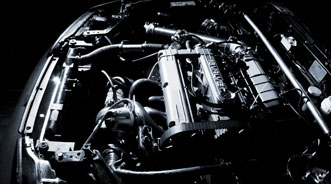Edmunds.com Calculates Magnitude of Industry Shift to Four-Cylinder Engines

By subscribing, you agree to receive communications from Auto Remarketing and our partners in accordance with our Privacy Policy. We may share your information with select partners and sponsors who may contact you about their products and services. You may unsubscribe at any time.
SANTA MONICA, Calif. –
Analysts from Edmunds’ AutoObserver.com stand convinced smaller engines are taking over the new-vehicle market. They point to two reasons for the shift: improved technology and a push for better fuel efficiency.
According to Edmunds.com’s data, the proportion of vehicles sold in the United States with four-cylinder engines has climbed from 32 percent in 2007 to more than 45 percent so far this year.
And in recent months, the site contends the four-cylinder engine has made up more than 50 percent of sales, placing the smallest engines as the dominant choice in the market.
“New technology has markedly improved the power density of four-cylinder engines, making them nearly as powerful and torque-productive as recent V6s,” explained Edmunds.com analyst Ivan Drury.
“Ford Motor Co., for example, now has a turbocharged 2-liter 4-cylinder engine for its Explorer crossover, a vehicle that once was commonly fitted with a V8,” Drury pointed out.
Edmunds.com acknowledged one obvious benefit of smaller engines is better fuel economy, and fuel mileage in four-cylinder engines has improved in the most recent models.
Subscribe to Auto Remarketing to stay informed and stay ahead.
By subscribing, you agree to receive communications from Auto Remarketing and our partners in accordance with our Privacy Policy. We may share your information with select partners and sponsors who may contact you about their products and services. You may unsubscribe at any time.
The site’s data indicates average fuel economy for all 2012-model four-cylinder engines is 26.6 miles per gallon, up almost 1 mpg from the 25.8 mpg average in four-cylinder engines for 2011 model year vehicles.
The market’s shift to smaller engines means fuel economy is on the upswing, too, according to Edmunds.com.
In January 2007, Drury noted the average fuel economy for all new vehicles sold was 20.5 miles per gallon. When four-cylinder engine penetration rates surpassed 40 percent in April 2008, he determined average fuel efficiency increased to 21.8 mpg.
By March of this year, when four-cylinder penetration reached 50.5 percent (one of the highest rates in four years), Drury indicated average fuel economy was 23.5 mpg — a 15-percent improvement from January 2007 when four-cylinder engines were in just 32 percent of all new vehicles sold.
After mentioning the Ford Explorer, Drury also touched on activity by another domestic OEM.
According to an April report by Edmunds’ AutoObserver.com, the number of retail customers for all Chevrolet models opting for four-cylinder engines climbed from 23 percent in 2007 to 46 percent through the first quarter of 2011.
“The numbers are especially impressive considering the disproportionate presence of full-size pickup trucks — which have traditionally carried larger engines — within the brand’s sales mix,” Drury surmised.
“For consumers, it’s high fuel prices and slimmer wallets. For automakers, it’s the tug of pending fuel-economy regulations,” he continued. “Combine the two, and the U.S. auto market is undergoing a visible and predictable reconstitution, evidenced by smaller vehicles and smaller engines.”


